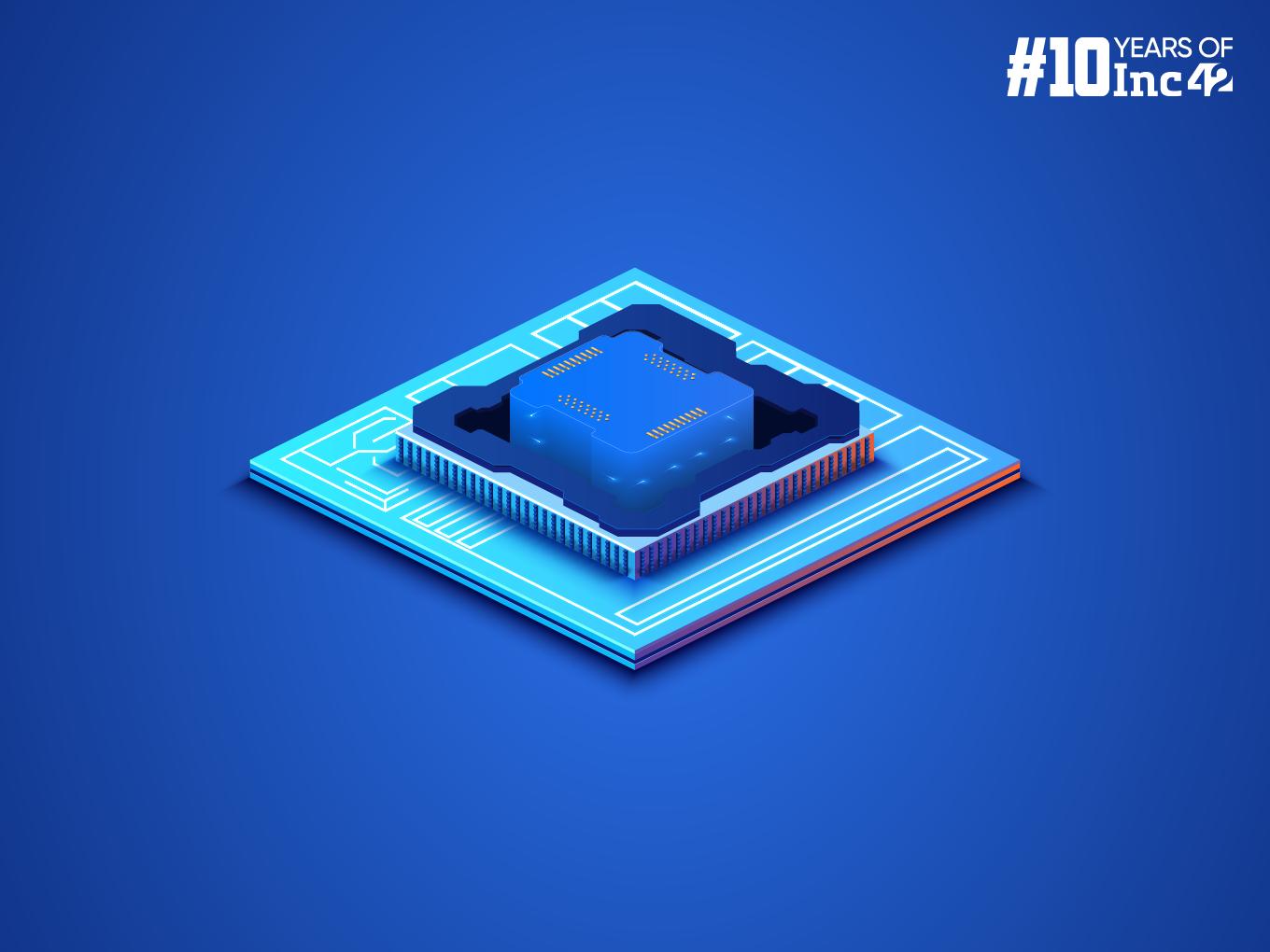What Is Chip Architecture?
In semiconductors, architecture refers to the instruction set architecture (ISA), a detailed set of rules and specifications governing how a chip processes data and executes instructions. This ISA defines the types of instructions the chip can understand, the format of data it can manipulate, and the registers used for temporary storage during computations.
The architecture also specifies the chip’s memory hierarchy, including cache levels and how data is fetched from main memory.
How Are Chips Designed?
Designing a chip is a complex process, which involves human ingenuity and powerful tools. The following is a simplified breakdown of the key stages:
- Conceptualisation: This initial phase focusses on defining the chip’s purpose and functionality. Engineers brainstorm, sketch out ideas, and determine the type of chip (digital, analogue, mixed-signal) needed for the desired application.
- Architecture Design: Here, the blueprint for the chip’s internal structure takes shape. Architects define the number of processing cores, memory hierarchy, and communication pathways between components. This stage also involves selecting the instruction set architecture (ISA) that the chip will adhere to.
- Functional Design: Engineers translate the architectural plan into a detailed schematic. This schematic uses symbols to represent individual transistors, logic gates, and other building blocks that will be interconnected to form the chip’s functional units.
- HDL Coding: Hardware Description Languages (HDLs) like Verilog or VHDL come into play. Engineers use these specialised languages to write code that describes the chip’s behaviour and functionality more abstractly.
- Simulation & Verification: Before committing to fabrication, engineers extensively simulate the chip’s behaviour using powerful software tools. This helps identify and rectify any potential errors in the design to ensure the chip functions as intended.
- Layout And Place & Route: This intricate stage involves translating the HDL code into a physical layout on a silicon wafer. Software tools strategically place the various components (transistors, wires) on the chip, considering factors like heat dissipation and signal integrity. Then, automated tools meticulously ‘route’ the connections between these components, ensuring proper electrical connectivity throughout the chip.
- Design For Manufacturability (DFM): Chip designers must consider the limitations of the manufacturing process. DFM ensures the design adheres to the manufacturer’s specifications and can be reliably produced with minimal defects.
- Verification & Signoff: After layout and routing, the design undergoes rigorous checks to ensure it aligns with the original specifications and adheres to manufacturing rules. Once everything is verified and signed off, the design data is sent to the fabrication facility.
- Fabrication: This stage involves the creation of the chip on silicon wafers using a complex series of photolithography and etching processes.
- Testing & Packaging: The manufactured chips undergo rigorous testing to weed out defective units. Finally, the functional chips are packaged to protect them from the environment and facilitate connections to other components.
What Are Some Popular Architectures?
In the world of chip architectures, two main categories dominate:
- x86 Architecture: This is a complex instruction set computer (CISC) architecture developed by Intel. It has been the king of personal computers (PCs) and workstations, known for its powerful performance. Companies like AMD also design processors based on licenced x86 architectures.
- RISC Architectures (Reduced Instruction Set Computing): RISC processors focus on simpler instructions that can be executed faster and with lower power consumption. This makes them ideal for mobile devices, embedded systems, and server applications. Here are some prominent RISC architectures:
- ARM Architecture: This popular architecture dominates the mobile device market, powering smartphones and tablets from various manufacturers. It’s known for its balance of performance and power efficiency.
- MIPS Architecture: Another RISC architecture, MIPS is often used in embedded systems like routers, printers, and other network devices that prioritise low power consumption.
- Other RISC architectures: Other RISC architectures include PowerPC (used in some high-performance computing applications) and SPARC (used in some server environments).
Beyond these major players, there is a growing trend of custom architectures designed for specific applications. For instance, companies like Google and Tesla are developing custom chips optimised for tasks like machine learning and autonomous driving, respectively.
What Is The Future Of Chip Architecture?
The future of chip architecture is brimming with exciting possibilities, driven by the ever-increasing demand for faster, more efficient, and specialised processing power. Here are some key trends to watch:
- Heterogeneous Integration: Moving beyond traditional single-core designs, chips will likely integrate various processing cores (CPUs, GPUs, specialised AI accelerators) onto a single package, each optimised for specific tasks. This allows for more efficient allocation of resources and improved overall performance.
- 3D Chip Stacking: To overcome the limitations of miniaturisation, chipmakers are exploring stacking multiple layers of chips vertically, creating 3D structures. This allows for more processing power and functionality within a smaller footprint.
- Neuromorphic Computing: Inspired by the human brain, neuromorphic chips are designed to mimic the structure and function of biological neurons. These chips hold promise for excelling at tasks like pattern recognition and machine learning, potentially revolutionising AI applications.
- New Materials & Technologies: The constant push for miniaturisation and performance gains might necessitate exploring new materials like gallium nitride or exotic transistor structures beyond the traditional silicon field-effect transistors (FETs).
- Security By Design: As chip security becomes paramount, chip architectures will likely incorporate security features from the ground up, making them more resistant to hacking and other vulnerabilities.
- Open-Source Hardware: Traditionally, chip design has been a closely guarded secret. The future might see a rise in open-source hardware architectures, fostering collaboration and innovation in chip design.








